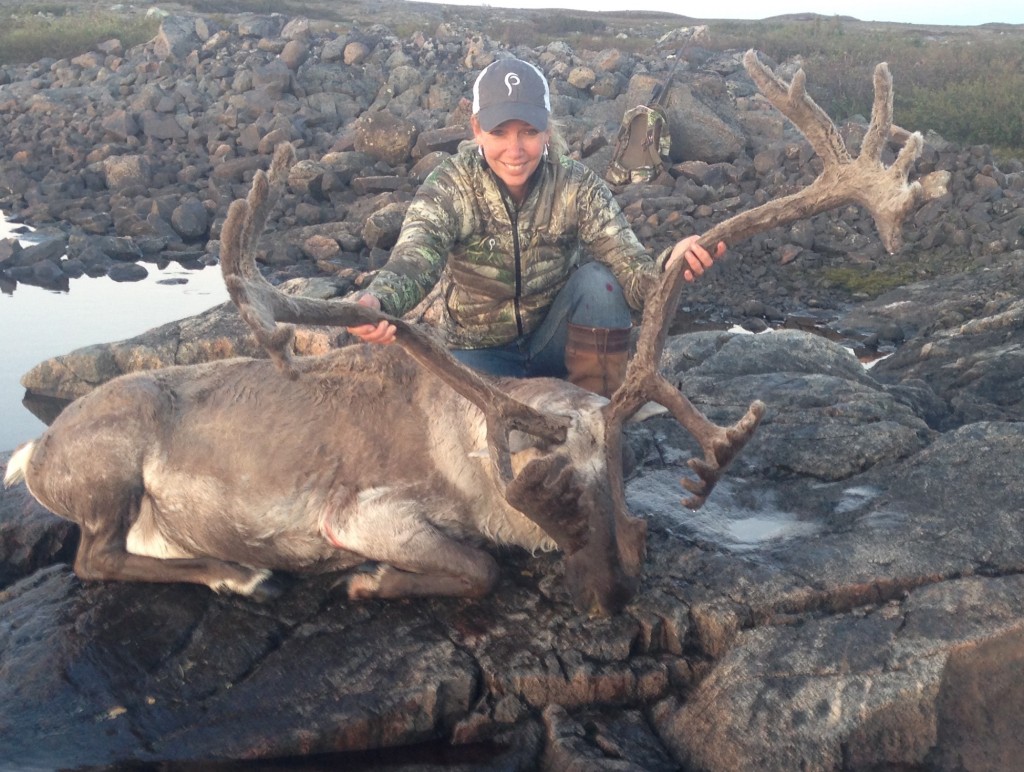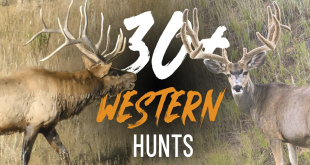
Traveling to hunt can present some challenges. International traveling to hunt can result in the weary traveler feeling as if she has just taken an ice pick to the eye. I recently travelled to Quebec for a once in a lifetime caribou hunt with High North Outfitters. Oh man…this trip was everything I had hoped it would be. A great outfitter, great guides, superb food (still trying to lose that last pound), awesome friends and an abundance of animals provided the perfect recipe for the perfect adventure.
Yet…why is it so difficult to travel to and from Canada?
Okay, it isn’t really that difficult to travel to Canada. I learned some pretty valuable lessons during this particular trip that will help with planning for my future trips to the frosty north. While some issues I figured out efficiently, other lessons I learned in the most difficult of ways. Thus, I shall impart my wisdom (or actually, my lessons learned!) so that maybe, just maybe, I can help make international travel to and from Canada a bit easier for the next person!
Preparation.
1. Form 4457. Yep… this sucker can be the bane of your existence if you do not plan ahead to get it completed. Prior to departure, bring the items to be registered to your local U.S. Customs and Border Protection (CBP) office. The CBP officer on duty will give you a blank Form 4457 to complete. Fill in the form as instructed. You will need to know the make and serial number of your firearm, scopes, optics and any other expensive items you may be taking with you. The CBP officer will compare the merchandise with the information entered on the form, completing and signing it and then return the completed form to you. You will need to present this form upon re-entry to the United States.

2. Make sure you know the particular regulations for firearm transfer for hunting for the airline you will be utilizing. I have travelled to Canada three different times carrying firearms and each time I have had a different experience. I have been told the bolt cannot be in the gun case and must be in a separate CHECKED bag by some airlines and not others. I have been told the firearm must have a lock in the action by some airlines and not by others. I have made it through with one lock on my gun case by some and have been required to have two locks on my case by others. Go figure. So, here is what I now do. I remove the bolt and put it in the checked bag with my ammo. I lock the action of my rifle. I double lock my gun case. I stand on one foot, hop in a circle while reciting the Gettysburg address. Whatever it takes. Nothing is worse than being “THAT” person in line when checking firearms and bags. Wear a strong deodorant too… just saying.
3. I now take two sets of keys for my gun case. I suppose you can guess why. Jeez.
4. Arrive early to the airport to allow yourself plenty of time to get through ticketing, bag check, TSA firearm screening and security. Did I mention a good deodorant?
5. Be prepared to spend some time in Customs in Canada. You will need to present your firearm, your passport and all paperwork. You will also need to be prepared to pay a fee when you arrive. I believe it was $25 Canadian in 2015.
Returning to the U.S.
1. Most importantly… do not plan a super early flight out of Canada. Honestly, try to give yourself plenty of time. Otherwise you will have a stroke. No lie.
2. Before you leave your outfitter, find out what sort of packaging your meat will be transported in. This really matters. If your meat is in locking coolers that are taped and sealed you will be ok. If the meat is packed in tubs that have removable lids (Like Rubbermaid tubs) some airlines (Air Canada in particular) will require that you have your meat tubs wrapped in cellophane. This is required as the airlines need to ensure there is no blood leakage during travel. Reasonable enough. Believe me when I tell you, the airline will turn you away at the ticketing counter until you get this taken care of. This service is available at most major airports. Word to the wise, check with your airline early to see what the requirements are. This will save you a lot of running back and forth carrying guns, gear, antlers and meat.
3. Check with your airline to determine the maximum weight of bags allowed as well. If you plan to bring 80 lbs of meat home in a single cooler, you can rest assured you will not be getting your meat home. You may have to plan on two smaller containers to make the weight requirements. Figure this out before you leave the states so you can plan during your stay. Early communication with your outfitter will also help.
4. Should you be bringing your antlers (if you are hunting an antlered animal) back with you on the plane, here is another tidbit you need to know. You CAN bring those back and check them. However, you must ensure they are cellophane wrapped and that all pointy edges are sufficiently padded. Check with your outfitter early to see what they can do to package your antlers. Often, the antlers are wrapped and taped but the airlines (Air Canada in particular) will not accept them in that state. A quick trip to the cellophane wrapping man at the airport will ensure you are travelling in accordance with the airline’s regulations.5.
5. Firearms. Nothing radically different here.
6. U.S. Customs. Be prepared with your passport, U.S. Customs Declaration Form and your 4457 form. If you are bringing meat, skulls or antlers back into the United States you must be prepared to show your Canadian hunting license. You will also need to fill out the wildlife declaration forms. This takes a few minutes so make sure you allot enough time at the airport and/or between connecting flights.
7. This is it. Hopefully.
One last note, should you be hunting in a very remote area and coming into a major city on a cargo transport plane you should keep a couple of things in mind. First, you should determine where your meat will be going. Often, meat and antlers will be taken to a separate cargo hold which may not even be connected to the airport. If so, you will need to arrange to get there to pick up your meat and antlers. Second, you need to determine the hours of operation for the cargo hold. If your flight or the carried cargo arrives after the cargo area closes, your meat and antlers will not be tended nor will they be placed in a cooler of any sort. We had this misadventure and had to go to the cargo area and plead for placement in the coolers. This was unpleasant. Third, find out what time cargo opens in the morning to collect your meat and antlers. If you have an early morning flight, you have a problem. You will need to arrive to cargo, pick up your meat and antlers (when they want to get it to you) then transport to the airport. This took me over an hour and it was at 5:00 am.
Again, international travel with firearms, meat and horns or antlers can be a bit of a stressful ordeal. With some good planning and communication, you can truly ease the process. Oh, I can neither confirm nor deny that I learned all of these lessons the hard way. Let’s just chalk it all up to experience.
Until next time…
 Eastmans' Official Blog | Mule Deer, Antelope, Elk Hunting and Bowhunting Magazine | Eastmans' Hunting Journals
Eastmans' Official Blog | Mule Deer, Antelope, Elk Hunting and Bowhunting Magazine | Eastmans' Hunting Journals





All is well for the most part and good information….
However… Never, Never separate your bolt from the rifle… You can still carry on a hunt without a toothbrush and your Calvin Klein’s… However… If the bolt of your rifle happens to be in your missing bag of Calvin Klein’s…… Think you get the picture……. 🙂
*Always remove your bolt to play it safe. Place it in a sock or wrap it to where it doesn’t rub in your case.*
I have an even bigger problem: My two favorite hunting rifles (Ruger #1 and T/C Encore) don’t have removable bolts. I’d sure hate to have some airline paper-pusher tell me that my single-shot rifles aren’t legal to bring into Canada because I can’t make them “safe” by removing the bolt
I fully agree. Unfortunately, I have been required to remove it. Strange but true.
I have crossed the border into Canada once to twice a year for my entire life(52 years). Prepare and follow all the advice and there will be no problems. My easiest border crossing was when crossing into Alberta for hunting and saying yes to the gun question. Forms are easy to fill out and the customs agents were very helpful. One thing to keep in mind is that you cannot purchase ammunition from a retail location as a non resident without an FAC card. (firearms acquisition certificate). You may be able to purchase from your licensed guide but it is easier to bring your own ammunition but there are limits to the quantity depending on your firearm.
After hunting on three continents and several countries the only place I have ever experienced trouble was entering the US by bus from Canada. I was placed in handcuffs and locked in a cell. As I had all paperwork complete (including Canadian showing I brought the 1981 bolt action Remington 700 with me) they let me go after a hour delay of the bus. I felt so sad for my fellow travelers.
Oh man…..it’s tough!
Do not count on easy entry, though it may happen. The only thing consistent about Canadian border crossing is the inconsistency! Border Agents are free to do pretty much whatever they want with a foreign visitor. There are a number of agents who are anti hunting, when you encounter one of them expect trouble. They can be master harassers. The good news is there are many pro hunters and the experience can be very plesant.
I live on the border of Michigan and Canada. I have a fish camp in Canada and cross the border at least 12 times a year to fish and hunt. If you fill out the forms properly and answer any questions honestly the Canadian border people have been great to deal with. The reentry to the us can be a bit of a hassle if you don’t have all the i’S dotted and the t’S crossed.